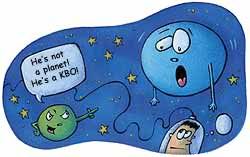
My Very Enigmatic Mother Wants To Take Away My Pizza (Or Life On 2003UB313?)
Holy Alderaan, our neighborhood may about to get much more crowded!

This week, a new era may dawn, as the International Astronomical Union has convened at the Prague Congress Centre in Prague, Czech Republic for the XXVIth General Assembly of the International Astronomical Union since last Monday, who will be addressing there through August 25th, and will vote this week on a resolution titled “Draft Resolution 5 for GA-XXVI: Definition of a Planet“, which, for the first time in the union’s 87-year history, will have a high-level committee recommending the word “planet” be officially defined according to both scientific and historic standards. The resolution also considers the following:
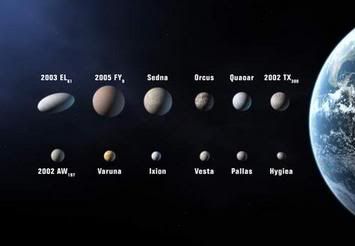
*
*
1) Contemporary observations are changing our understanding of the Solar System, so therefore our nomenclature for objects should reflect our modern, popular understanding of them. This should particularly apply to the term "planets", where the word originally described “wanderers” that were only moving lights in the sky, and that recent discoveries call for an updated definition due to new scientific information.
2) Under the above understanding, planets should be defined as “celestial bodies that (a) have sufficient mass for their self-gravity to overcome rigid body forces so that they assume a hydrostatic equilibrium (nearly round) shape1, and (b) are in orbit around a star, and are neither stars nor satellites of a planet.”
3) In considering the above definition, that we should again distinguish between the eight classical planets discovered before 1900, which move in nearly circular orbits close to the ecliptic plane, and other planetary objects in orbit around the Sun, with all other objects smaller than Mercury, and because of this, Ceres, a round asteroid and the largest object in the asteroid belt orbiting the sun between Mars and Jupiter, should be considered a planet by the above scientific definition. (Ceres historically has been distinguished from the classical planets as a "dwarf planet.”)
4) Pluto is recognized as a planet by the above scientific definition, as are one or more recently discovered large Trans-Neptunian Objects (including Charon, a moon of Pluto, and 2003UB313, a.k.a Xena, a round Pluto-sized sphere out in the limits of our current space scope) which in contrast to the classical planets typically have highly inclined orbits with large eccentricities and orbital periods in excess of 200 years, and in result this particular category of planetary objects should be renamed “plutons”, with Pluto remaining the prototype, so that they stand out from the eight classical planets.
5) All non-planet objects orbiting the Sun will be called "Small Solar System Bodies"
*
*

Also, should this resolution be passed when it is voted on this Thursday, other likelihoods will include the following:
*
*
1) Given all the nuances of the definition, a dozen other space objects will make a list of “candidate planets” by the union, which could eventually increase the tally of classified planets in our solar system to 24 (they are Hygiea, Pallas, Vesta, Ixion, Varuna, Quaoar, Orcus, Sedna, 2002 TX300, 2002 AW197, 2003 EL61 and 2005 FY9.)
2) If Pallas, Vesta, and/or Hygeia are found to be in hydrostatic equilibrium, they are also planets, and may be referred to as "dwarf planets".
*
*
But not everyone is excited about possibly giving Pluto getting the downgrade. Because Harvard astronomer Owen Gingerich, who heads this committee, considers the definition of a planet an “object that orbits a star like the sun; is massive enough so its own gravity keeps it roughly round; and isn't a satellite of another planet, like the moon.”, other astronomers are saying things like, “Hey, you just hold your horses there a second, Charon, you all act as though you’re all that, orbiting around the sun as round as can be and all, but what’s up with you orbiting Pluto too, sounds like satellite scurvy to me!“ and “Yo Ceres, I thought you said you were an asteroid, now you say you want to be a planet, what’s up with that?”
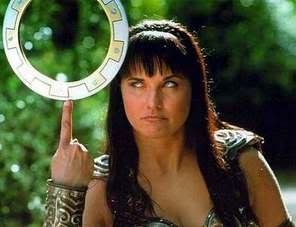
Michael Brown of Caltech, Chadwick Trujillo of the Gemini Observatory atop Mauna Kea in Hawaii and David Rabinowitz of Yale also all discovered 2003 UB 313 (or Xena: Warrior Planet) three years ago, and have found many more remarkable discoveries since then in the millions of miles between Neptune and Pluto in the Kuiper Belt, where Pluto was discovered in 1930. Brown is one of the major critics of Resolution 5, saying, “I’m totally confused, they say Xena's a planet, but Sedna and Quaoar also fit the definition, so why aren't they being called planets, too? And Charon's a satellite of Pluto, so why is it a planet? It's not; it's a moon. That committee's definition is an effort to combine science and culture, and it doesn't do either.” He adds that with all the new round orbiting objects that astronomers have detected in the Kuiper Belt, the number of planets should total at least 53 by current standards.
*
Charo In New Geico Commerical
*

So, as you can see……..they’re playin’ Fizzbin with our solar system, leaving us like the Sigma Iotia II with nothing to say but “…….Zah?” as the rules continue to change with every fluffy shuffle. Understanding the gas giants these days is…..well……a gas……and if we’ve actually come to the conclusion that any big mass that’s round and circles a star is a planet, then by all means make Charo, not Charon a planet! Come on, let’s dance the Regolith Reggaeton…you know, that dance that really should be called two dogs humping, kind of like spooning but as you know, spooning can lead to forking, but don’t you miscon-mess with me……ahhhhh, never mind, um, err, Cuchi-Cuchi! LOL!

For the love of Io Plasma Torus, stop confusing our lil’ aspiring space cadets who, like Fred Z. Randall in the 1997 comedy “Rocketman” when as a child he’d crawl into his mother’s washing machine and going for a spin cycle, pretending as he peers out of his window that it’s his spaceship porthole and staring at a tapestry of the Earth, admiring it as a “giant blueberry”. (smiles) And holy sweet Alaskan asparagus tips, we know where his dreams take him when he’s thirty; far off into the red deserts of Mars and goes on a crazy food-tube-a-palooza when his chimp cadet Ulysses steals his hypersleep pod! Sweet swirling onion rings, that was as precious as dental floss at a Willie Nelson concert! (giggles) For the love of God, spare their fragile colorful minds of this Sirius red tape, or red dwarf tape is it?

Besides, think of what this will mean for our children’s school textbooks. The Klingons will be laughing themselves out of their fusion-powered rocket chairs when they learn in 2012 that 92% of eighth-graders answered that Pluto-sized sphere in the far reaches of our galaxy as UB40 on their science exams. Then you wake up at their high school level and find out that the line broke, the monkey got choke and burned bad rizla pon him little rowing boat! (giggles)

But most of all, a huge change to our planetary line-up will also mean a huge change to our understanding of Western astrology…..especially my sun sign! (Eek!) As you are well aware, Pluto rules Scorpio, as Pluto rules sex, psychology, death, and regeneration, as well as the transformative evolution of the collective in simplest of terms. Should Pluto be downgraded into a “Pluton”, it will significantly affect the nature of Scorpios such as myself in Western understanding, which may very well make sense in that Pluto represents transformations and metamorphosis and such an evolution was inevitable, for a planet that has brought you such phenomenons as Stouffers Corner Bistro cuisines and nuclear fusion! So you may expect to see me undergo some huge transformations these forthcoming months or so, as well as with the Eighth House and may spell new changes for rulership of Mercury and Venus, which both currently have double-rulers (Mercury rules both Gemini and Virgo, while Venus rules both Taurus and Libra)
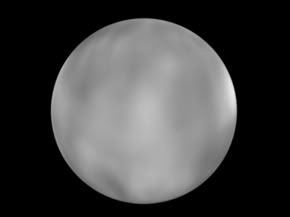
As for the new proposed planets, they can offer revolutionary changes to how we observe western astrology as well. For instance, Ceres, discovered in 1801, is the Roman name for the Greek goddess Demeter, which rules agriculture, sustenance and motherhood, and known especially as the mother who saw her daughter Persephone vanish into the underworld of Hades/Pluto after being tempted with pomegranate seeds, during which she created a perpetual winter until her daughter was returned. And right now, astrologers are arguing what sign Ceres will rule if it becomes a planet, where some believe it should rule Virgo because of its striving to seek perfection in life through learning and also that Ceres was an unmarried woman, while others think Cancer fits Ceres far more because Ceres was also a fiercely, nurturing protective mother, willing to sacrifice the good of her people for the sake of her daughter, which contradicts Virgo’s notion of serving the likes of others, with Cancer also being the cardinal sign for the summer season when Demeter returns home from the underworld to her mother and the growing begins.

What I also find fascinating about Ceres, if it becomes a planet, is that in many minds it would represent the rebirth of interest and respect for traditional farming methods, which has already begun with environmental deterioration, genetically-modified organisms, pesticides and other elements in which undermine our agricultural process being challenged with the comeback of organic farming worldwide, and could also be the symbol of awareness to the increasing demand to turn to alternative fuels and energies.

There’s also fascinating insights into what the characterizing of other planets may mean for Western astrology. Below are some fascinating insights I’ve read regarding various planets, as well as the mysterious “Indigo Children”, a “different” generation that began when both Pluto and Quaoar entered Scorpio four days after I was born in November 1983, which are beginning to graduate from college and are in many astrologers’ minds the generation that will REALLY make changes and transformations in the world that their parents largely failed to accomplish. Enjoy!
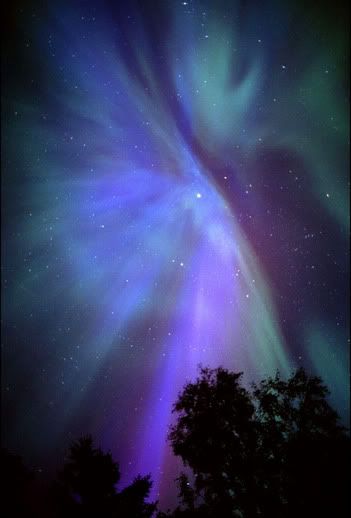
*
*
Quaoar & The Indigo Children
2003 UB313 & The Female Archetype Of The Warrior
Sedna
Orcus
The Centaurs
*
*

Whatever saucy (or sinister) schemes are on those egghead’s minds this week in Prague, I encourage all y’all to keep watching the skis......wha.......oh sorry, skies, keep watching the skies! Per Ardua, Ad Astra!
XOXO,
Noah Eaton
(Mistletoe Angel)
(Emmanuel Endorphin)




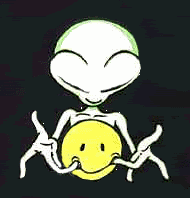


















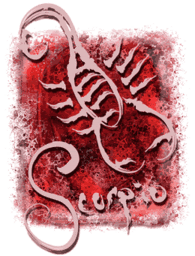


















0 Comments:
Post a Comment
<< Home